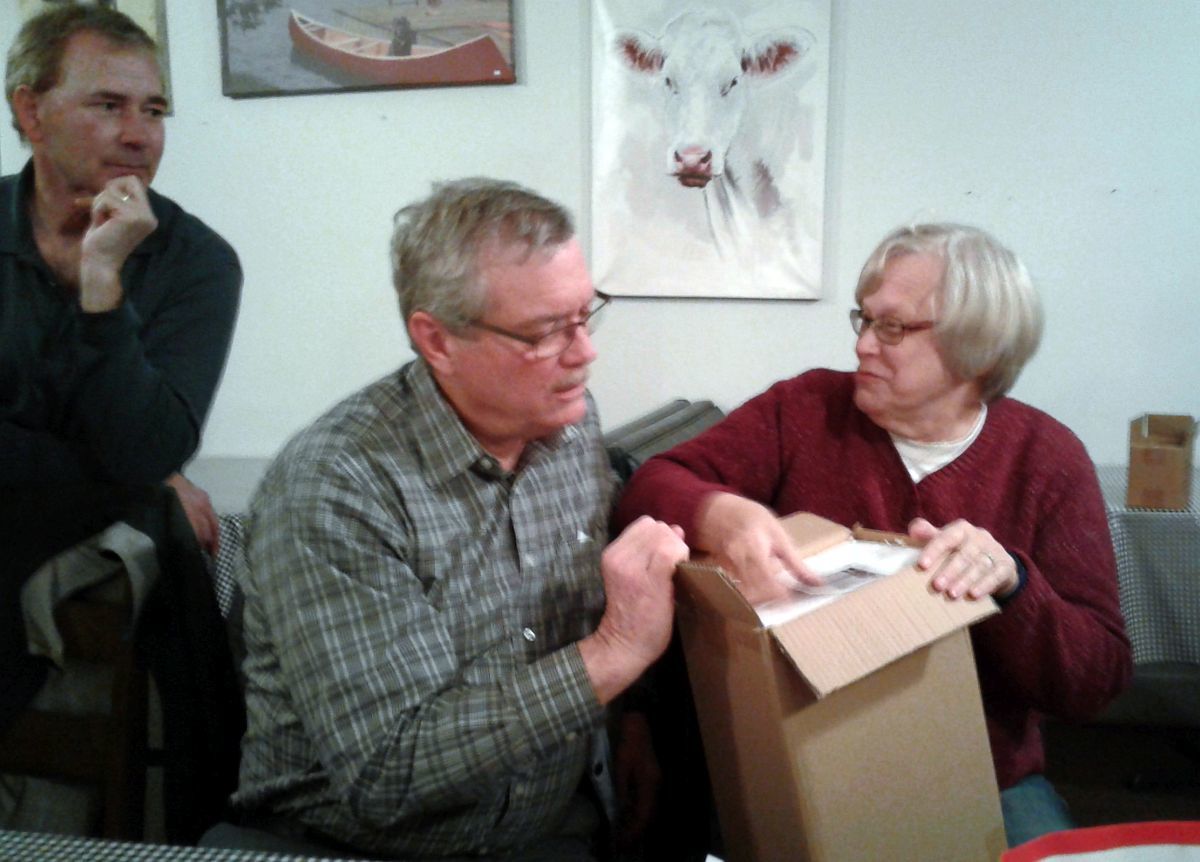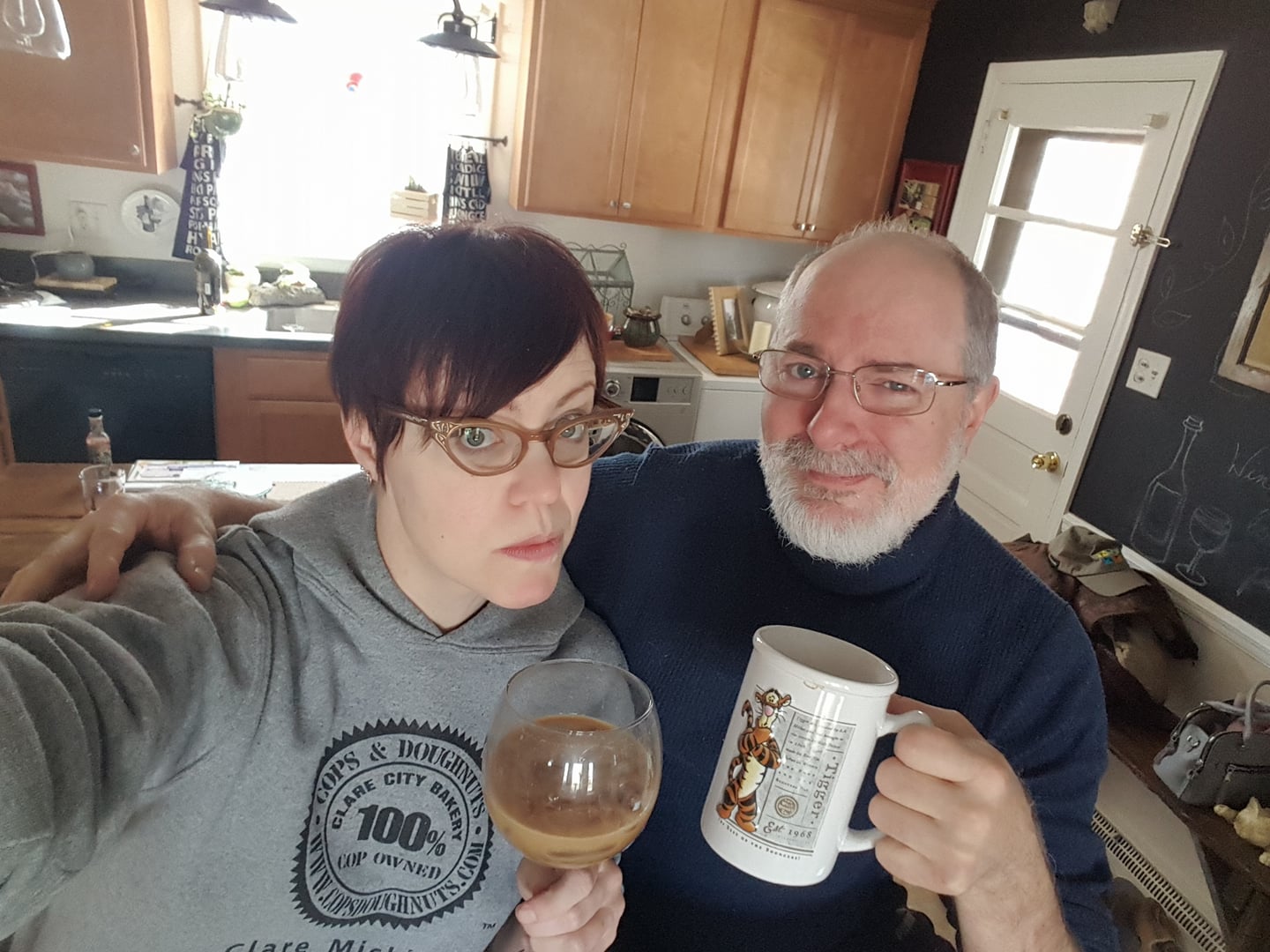Are you a
Star Trek fan? Me, I have always been fond of the original series (mostly) as well as the movies (mostly) and several of the spin-off series (somewhat). Until recently, it had been decades since I've seen any of the original series' episodes—probably the mid 1980s, when the show was still in regular syndication. However, when I discovered a year or so ago that the original episodes had been remastered and were available on
Amazon Prime, I decided to give them a look. Once again, I enjoyed watching them (mostly), particularly the digital upgrading of the old special effects, which were primitive even in their time and disappointed me as far back as I can remember. Unlike some significant percentage of
Star Trek fans, I'm not such a purist that I would stand by some unwritten law to the effect of "thou shalt not tamper."
I believe it was on
Facebook that I recently caught wind of the existence of
Star Trek Continues: a fan-made production that continues the timeline of the original series (1966–1969), made to resemble the show to an uncanny degree. Produced by
Vic Mignogna, who also stars as
Captain Kirk, the series of eleven episodes purports to complete the
USS Enterprise's five-year mission, leading up to where
Star Trek: The Motion Picture (1979) begins. A week or so ago, with most of
Star Trek's original series episodes fresh in mind, I took it to heart to watch
Star Trek Continues in full over a period of several days.
And I really,
really enjoyed it
(mostly).
Indeed, the most striking aspect of the show is its resemblance to the familar
Star Trek of old, down to the sets, the costumes, the camera angles, the four-act structure of the episodes—including fade-outs at the ends of scenes, where one might expect to see commercials. The majority of the music comes directly from the original series, with some additional compositions contributed by the ubiquitous
Vic Mignogna. The special effects, courtesy of Emmy-award-winning SPFX artist
Doug Drexler, are very much in keeping with the digital effects in the remastered episodes, so if you
have watched those, the visuals prove gratifyingly consistent across the properties, and if not, the new effects work is many steps up from the old.
 |
| The USS Enterprise (NCC-1701) as rendered for Star Trek Continues by SPFX artist Doug Drexler |
While the improved digital special effects work in the new series' favor, perhaps paradoxically, so do the the full-size interior and exterior sets, by way of their resemblance to the original's less-than-budget-busting constructs. The interior of the Enterprise—including the bridge, corridors, crew quarters, the shuttlecraft and bays—as well as planetary surfaces and structures, all match the appearance of the original series' sets to the detail. Indeed, the look, sound, and
feel of
Star Trek Continues makes it almost difficult believe one is
not watching a licensed extension of the show.
But it really isn't. The new series was made as an unlicensed, non-profit fan production that
CBS and
Paramount Pictures, as well as
Gene Roddenberry's estate,
could have squashed before it began. But they didn't. In fact, Gene Roddenberry's son, Rod, has been quoted as saying, "I'm sure my dad would consider this canon, and as far as I am concerned, it
is canon." I personally would go so far as to say I absolutely accept
Star Trek Continues as canon. Given its serious, thoughtful scripts and performances, not to mention its near-flawless continuity, it would seem rather silly not to.
For the most part, it's the members of the main cast that represent the greatest departure from the
feel of the original series. Few of them come as close to resembling the original characters, in either appearance or personality, as those in the J.J. Abrams reboot film series from the past few years. Regardless, once one becomes accustomed to the strange faces in the familiar roles, it's not difficult to accept these actors as the characters they portray. Although his tenor voice doesn't
sound like
William Shatner's, as Captain Kirk, Vic Mignogna captures many of Shatner's mannerisms and vocal rhythms such that, in no time, he becomes, for all intents and purposes, the
real Captain Kirk. The same might be said for
Todd Haberkorn, who neither looks nor sounds much like
Leonard Nimoy, but whose earnest portrayal of
Mr. Spock becomes easy enough to accept.
 |
| Todd Haberkorn (L) as Mr. Spock and Vic Mignogna (R) as Captain Kirk |
 |
The ladies of Star Trek Continues: Kim Stinger at Lt. Uhura, Kipleigh Brown as Lt. Smith,
Michele Specht as Dr. McKennah, and Cat Roberts as Lt. Palmer |
If you close your eyes and listen, you would swear that the voice of Chief Engineer
Montgomery Scott is none other than the late
James Doohan, and you would be incorrect, but only just. Mr. Scott comes to life courtesy of Jimmy Doohan's son
Chris, who seems as tailor-made for the role as his dad. And while his physical appearance doesn't much match
Walter Koenig's, actor
Wyatt Lenhart has captured Mr. Chekhov's voice and personality with striking precision.
While still "acceptable" in their parts, none of the other main cast members quite hit the right notes for their characters.
Chuck Huber looks and sounds not so unlike
Dr. McCoy as played by the late, great
DeForest Kelley, but his rather wooden, by-the-numbers performance lacks assurance and, most crucially, a strong chemistry with Mr. Spock. And unfortunately, neither
Grant Imahara as
Mr. Sulu or
Kim Stinger as
Lt. Uhura offer performances matching the caliber of Mignogna, Haberkorn, or Doohan, although both actors do manage to shine at various moments.
As a favorable balance,
Kipleigh Brown plays a strong
Lt. Smith, whose character first appeared in the original series episode "
Where No Man Has Gone Before," and who offers a few dramatic surprises, particularly during the last few episodes of the new series.
Michele Specht comes aboard the Enterprise as Ship's Counselor
Dr. Elise McKennah, whose character paves the way for future ships' counselors on board Starfleet spacecraft, the primary example being Counselor
Deana Troy in
Star Trek: The Next Generation, played by
Marina Sirtis—who also provides the ship's computer voice in
Star Trek Continues.
 |
Mother and daughter play the same role. Joanne Linville (L) from the
original series, and daughter Amy Rydell (R) from Star Trek Continues |
Several veteran
Star Trek players, as well as other noteworthy actors, make appearances in the show, such as
Michael Forest (who reprises his role as Apollo from the original series episode "
Who Mourns for Adonais?");
John DeLancie (
Q in
Star Trek: The Next Generation, though here he plays an unrelated character);
Colin Baker;
Jamie Bamber;
Lou Ferrigno;
Anne Lockhart; and many others. Perhaps most notably, actress
Amy Rydell appears as a Romulan Commander, the same role played by her mother,
Joanne Linville, in the original series episode "
The Enterprise Incident." In character, Rydell is a spitting image of her mother, as you may notice in the photo above.
Happily, for the most part, the new series' scripts are patterned after the best of the old and, with a few exceptions, deal admirably with non-fluffy topics, such as discrimination, personal ethics, and self-sacrifice. Many of the episodes relate directly to events from the original series, such as the aforementioned "
Who Mourns for Adonais?", "
Mirror, Mirror," "
The Tholian Web," "
The Enterprise Incident," and "
Where No Man Has Gone Before." It is, in fact, the latter episode—the "second" pilot for the original series, and the first to star William Shatner as Captain Kirk—that provides the basis for the final two-part episode of
Star Trek Continues ("
To Boldly Go"), thus bringing the two series full circle. "
To Boldly Go" also addresses and settles major plot points that have developed over the course of the series, as well as opening the door for the events to come in
Star Trek: The Motion Picture, making it the most satisfying and all-around best episode of the new series.
Is Star Trek Continues a worthy successor to the original series? Apart from the generally less-accomplished cast, I'd call it far superior to the J.J. Abrams reboot films, and possibly go as far as saying it is equal to or better than most of the myriad
Star Trek spinoff series. As a labor of love, it stands out far beyond any fan-made production that I have ever encountered. To say that it is sincere is an understatement; it is an expression of rarely matched creative integrity, succeeding on multiple levels—thematically, artistically, and dramatically.
If you are even a casual
Star Trek fan, do yourself the service of checking out
Star Trek Continues. It's not perfect—sometimes far from it—but in general it
embodies the best of what
Star Trek stood for from the beginning, sometimes in ways that exceed the original.
You can watch all the episodes for free, as well as find additional information about the production, at
Star Trek Continues. Also visit
Star Trek Continues on Facebook.
 |
Vic Mignona as Captain Kirk
|
 |
| Michele Specht as Counselor Dr. Elise McKennah |
 |
| Chris Doohan as Mr. Scott |
 |
| Kim Stinger at Lt. Uhura |
 |
| There's trouble in Engineering in "Come Not Between the Dragons" |
 |
| Mess not with these gentlemen! |









































